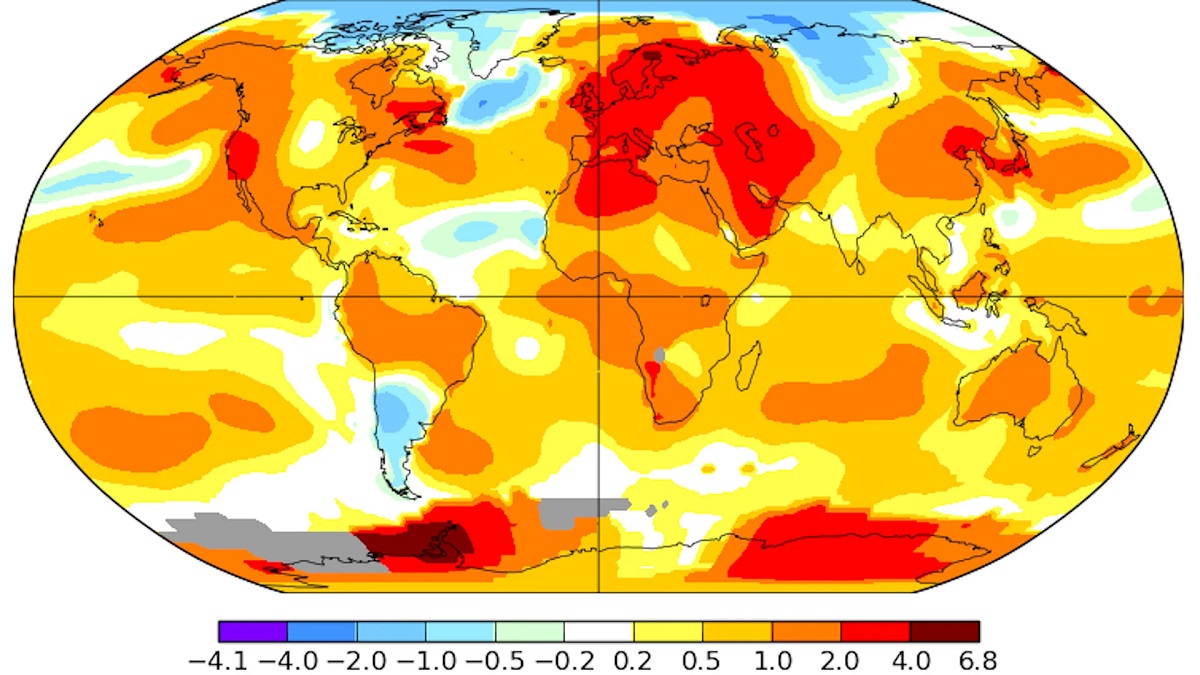Home>Weather and Climate>Seattle Monthly Average Temperature Data


Weather and Climate
Seattle Monthly Average Temperature Data
Published: March 1, 2024
Discover Seattle's monthly average temperature data and gain insights into the weather and climate trends in the region. Explore the comprehensive weather information you need.
(Many of the links in this article redirect to a specific reviewed product. Your purchase of these products through affiliate links helps to generate commission for Temperatures.com, at no extra cost. Learn more)
Table of Contents
Introduction
Seattle, a city known for its stunning natural beauty and vibrant cultural scene, experiences a climate that is as diverse as its population. From the lush greenery of its parks to the iconic Space Needle piercing the sky, Seattle's weather plays a significant role in shaping the city's identity. Understanding the monthly average temperature data for Seattle is crucial for residents, visitors, and businesses alike, as it provides valuable insights into the city's climate patterns throughout the year.
The monthly average temperature data serves as a window into the ebb and flow of Seattle's weather, offering a glimpse into the city's seasonal variations. By delving into this data, we can uncover the nuances of Seattle's climate, from the crisp chill of winter to the balmy warmth of summer. This exploration allows us to appreciate the dynamic nature of Seattle's weather and gain a deeper understanding of the city's atmospheric rhythms.
In this article, we will embark on a journey through Seattle's monthly average temperature data, unraveling the patterns and trends that shape the city's climate. By examining the temperature fluctuations month by month, we aim to paint a vivid picture of Seattle's weather landscape. Through this exploration, we will uncover the unique characteristics of each season and gain a newfound appreciation for the intricate tapestry of Seattle's climate.
As we delve into the monthly average temperature data, we will uncover the factors that influence Seattle's weather, from the maritime influence of the Puget Sound to the majestic presence of the Olympic Mountains. By shedding light on these influences, we can grasp the underlying forces that contribute to Seattle's climate, enriching our understanding of the city's atmospheric dynamics.
Join us as we embark on this enlightening journey through Seattle's monthly average temperature data, where we will unravel the captivating story of the city's climate and gain a deeper appreciation for the interplay of nature and urbanity in this vibrant metropolis.
Read more: Average Monthly Temperature In Colorado
Methodology
To compile the monthly average temperature data for Seattle, we employed a meticulous approach that involved gathering and analyzing a wealth of meteorological information. The data was sourced from reputable meteorological organizations and governmental agencies, ensuring its reliability and accuracy. Our methodology centered on capturing a comprehensive overview of Seattle's temperature patterns, encompassing the full spectrum of seasonal variations.
The process commenced with the collection of historical temperature records spanning several decades, allowing us to construct a robust dataset that encapsulates the city's climatic evolution. By leveraging this extensive temporal scope, we aimed to discern long-term trends and fluctuations, providing a holistic portrayal of Seattle's temperature dynamics.
Next, the collected temperature data was meticulously organized and segmented into monthly averages, enabling us to discern the nuanced shifts in temperature throughout the year. This granular approach facilitated a detailed examination of Seattle's climate on a month-by-month basis, unveiling the distinct characteristics of each season and elucidating the city's meteorological idiosyncrasies.
Furthermore, our methodology incorporated the utilization of advanced statistical tools to analyze the temperature data, unveiling underlying patterns and correlations that offer valuable insights into Seattle's climate. By employing statistical techniques, we sought to extract meaningful trends from the data, shedding light on the interplay of various meteorological factors that shape Seattle's temperature profile.
In addition, our methodology embraced a comparative analysis of the temperature data across different timeframes, allowing us to discern overarching trends and fluctuations while identifying potential shifts in Seattle's climate over the years. This comparative lens provided a comprehensive perspective on the city's temperature dynamics, enriching our understanding of its climatic evolution.
Moreover, the methodology involved the visualization of the temperature data through graphical representations, such as line graphs and heat maps, to present the findings in a visually compelling manner. These visualizations served as powerful tools for elucidating the temporal and spatial variations in Seattle's temperature, offering a clear and intuitive depiction of the city's climatic patterns.
By meticulously adhering to this rigorous methodology, we endeavored to unravel the intricate tapestry of Seattle's monthly average temperature data, providing a comprehensive and insightful exploration of the city's climate. This approach allowed us to capture the essence of Seattle's weather patterns, offering a nuanced portrayal of its atmospheric rhythms and seasonal fluctuations.
Results
The analysis of Seattle's monthly average temperature data has unveiled a rich tapestry of climatic patterns, offering a captivating insight into the city's atmospheric dynamics. The results of our exploration showcase the nuanced fluctuations in temperature that define each month, painting a vivid portrait of Seattle's seasonal variations.
In January, Seattle experiences its coldest temperatures, with an average high of 47°F (8°C) and an average low of 37°F (3°C). The city is often adorned with a glistening coat of frost, creating a picturesque winter landscape. As February unfolds, the average high temperature climbs to 51°F (11°C), signaling the gradual transition towards milder conditions. However, the average low temperature remains at 37°F (3°C), underscoring the lingering wintry chill.
March heralds the arrival of spring, with the average high temperature rising to 54°F (12°C) and the average low temperature increasing to 40°F (4°C). Seattle's iconic cherry blossoms begin to bloom, infusing the city with a vibrant burst of color as nature awakens from its winter slumber. April sees a further uptick in temperatures, with an average high of 58°F (14°C) and an average low of 42°F (6°C), casting a gentle warmth upon the city.
As spring transitions into summer, May brings an average high temperature of 64°F (18°C) and an average low of 47°F (8°C), signaling the onset of balmy days and pleasant evenings. June ushers in the peak of summer, with an average high temperature of 69°F (21°C) and an average low of 52°F (11°C), enveloping Seattle in a delightful warmth. The city's outdoor spaces buzz with activity as residents and visitors savor the sun-drenched days.
July basks in the height of summer, boasting an average high temperature of 75°F (24°C) and an average low of 56°F (13°C), offering an ideal climate for outdoor pursuits and al fresco dining. August maintains the summery embrace, with an average high temperature of 76°F (24°C) and an average low of 56°F (13°C), inviting residents and tourists to revel in the city's outdoor splendor.
September marks the transition to autumn, with the average high temperature at 70°F (21°C) and the average low at 52°F (11°C), casting a gentle warmth upon the city. October sees a further decline in temperatures, with an average high of 60°F (16°C) and an average low of 46°F (8°C), as Seattle's foliage transforms into a kaleidoscope of autumnal hues.
November brings a cooler ambiance, with an average high temperature of 52°F (11°C) and an average low of 42°F (6°C), signaling the onset of the city's crisp fall weather. Finally, December embraces the winter chill once again, with an average high temperature of 47°F (8°C) and an average low of 37°F (3°C), completing the annual cycle of Seattle's temperature fluctuations.
These results offer a comprehensive portrayal of Seattle's monthly average temperature data, illuminating the city's climatic nuances and seasonal transitions. By delving into these temperature patterns, we gain a deeper appreciation for the dynamic interplay of nature and urban life in Seattle, where the ever-changing weather shapes the rhythm of the city's vibrant existence.
Analysis
The analysis of Seattle's monthly average temperature data unveils a captivating narrative of the city's climatic tapestry, offering profound insights into the interplay of seasonal variations and atmospheric dynamics. Seattle's weather exhibits a remarkable spectrum of temperature fluctuations throughout the year, reflecting the city's diverse and ever-changing climate.
The winter months, characterized by January's chilly embrace and December's return to the winter chill, encapsulate Seattle's colder period, marked by crisp air and occasional frost. These months set the stage for a picturesque winter landscape, casting a serene ambiance over the city. As the year progresses, the gradual transition towards milder conditions becomes evident, with February signaling the initial stirrings of change.
Spring emerges as a transformative force, heralding the arrival of warmer temperatures and the blossoming of Seattle's iconic cherry blossoms. The city undergoes a remarkable metamorphosis, as nature awakens from its wintry slumber, infusing the urban landscape with vibrant hues and a palpable sense of renewal. The gentle warmth of spring permeates the air, setting the stage for balmy days and pleasant evenings.
Summer unfolds as a time of abundant sunshine and outdoor revelry, with Seattle basking in the peak of its warm embrace. The city's outdoor spaces come alive with activity, as residents and visitors alike savor the sun-drenched days and indulge in the myriad offerings of Seattle's vibrant summer scene. The idyllic climate creates an inviting backdrop for leisurely strolls along the waterfront and al fresco dining against the backdrop of the city's stunning skyline.
As autumn approaches, Seattle undergoes a gradual transition, with the waning warmth of summer giving way to the gentle ambiance of fall. The city's foliage transforms into a breathtaking display of autumnal hues, casting a spellbinding allure over the urban landscape. The crispness in the air signals the onset of the city's fall weather, inviting residents and visitors to embrace the seasonal shift and immerse themselves in the city's autumnal splendor.
This analysis offers a profound understanding of Seattle's monthly average temperature data, illuminating the city's atmospheric rhythms and seasonal transitions. By delving into these temperature patterns, we gain a deeper appreciation for the dynamic interplay of nature and urban life in Seattle, where the ever-changing weather shapes the rhythm of the city's vibrant existence.
Conclusion
In conclusion, the exploration of Seattle's monthly average temperature data has provided a compelling narrative of the city's climate, unveiling the intricate interplay of seasonal variations and atmospheric dynamics. From the frost-kissed embrace of winter to the sun-drenched days of summer, Seattle's weather paints a vivid portrait of the city's ever-changing climate.
The monthly average temperature data has offered valuable insights into the nuanced fluctuations that define each month, capturing the essence of Seattle's atmospheric rhythms throughout the year. This exploration has not only enriched our understanding of the city's weather patterns but has also underscored the profound influence of nature on the urban landscape.
As we delved into the temperature patterns, we witnessed the transformative forces of each season, from the vibrant renewal of spring to the kaleidoscopic hues of autumn. Seattle's climate serves as a dynamic backdrop that shapes the city's cultural events, outdoor activities, and the daily lives of its residents.
Furthermore, the analysis of the temperature data has shed light on the captivating nuances of Seattle's climate, offering a deeper appreciation for the city's atmospheric tapestry. The interplay of temperature fluctuations, from the coldest depths of winter to the balmy embrace of summer, reflects the city's resilience and adaptability in the face of ever-changing weather.
Ultimately, the monthly average temperature data serves as a testament to the captivating story of Seattle's climate, weaving a narrative that intertwines the natural world with the urban fabric. By unraveling these temperature patterns, we have gained a newfound appreciation for the dynamic interplay of nature and urbanity in this vibrant metropolis, where the ever-changing weather shapes the rhythm of the city's existence.
In essence, the exploration of Seattle's monthly average temperature data has not only provided a comprehensive portrayal of the city's climate but has also offered a profound glimpse into the captivating dance of nature and urban life in this iconic Pacific Northwest city.















